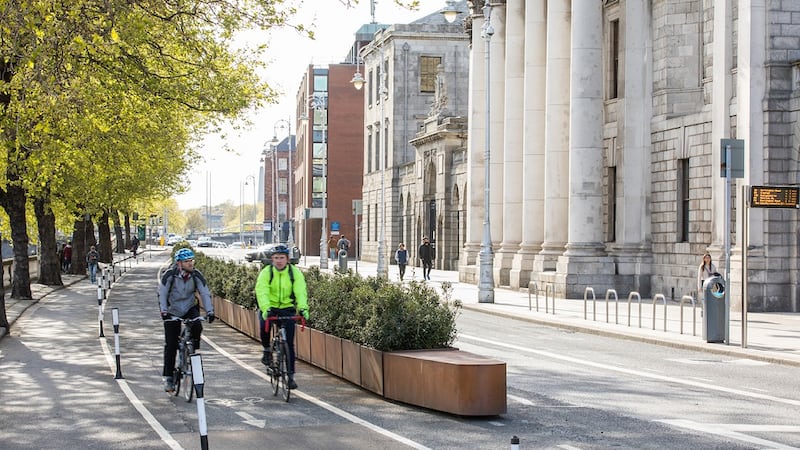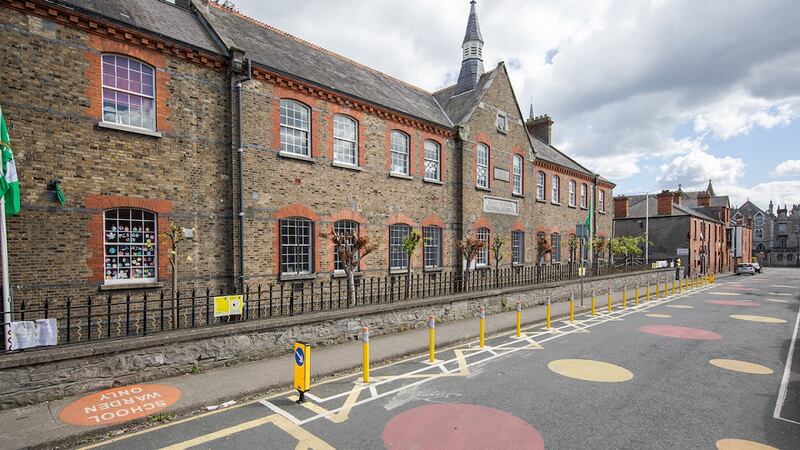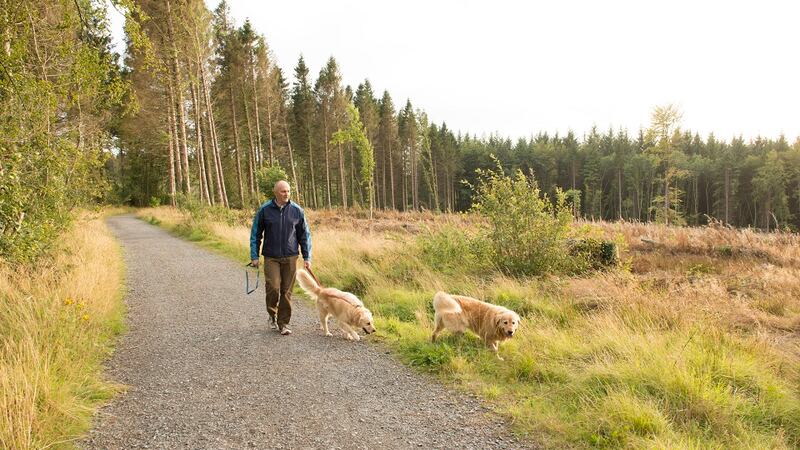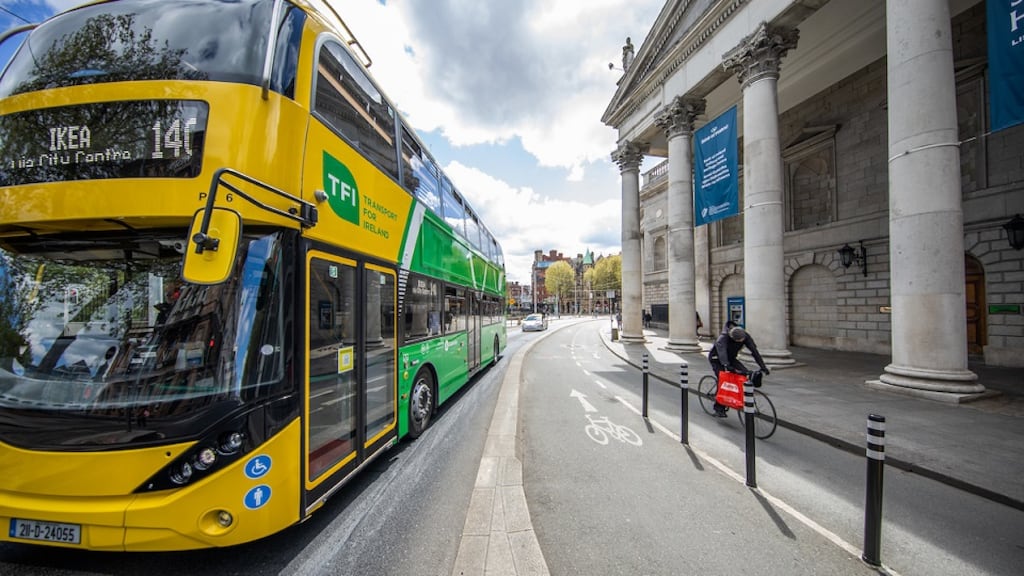The past year has been tough for everyone, and getting outdoors has been key to our physical and mental health. If you weren’t much of a walker or cyclist before, you may have been converted during the pandemic as a way to explore your 5km limit.
Now, as things are getting back to something resembling “normal”, many of us are trying to ensure we keep up some of the good habits we’ve developed.
Incorporating cycling and walking into our day-to-day activities, such as travelling to school or visiting the supermarket, is transforming the journey for an ever-increasing number of people and is helping us reconnect with our local communities.
For many essential workers, commuting to work continued throughout the pandemic. As restrictions begin to ease, students have returned to school and workers in sectors that have been closed may be preparing to start travelling to their jobs once more. There are many benefits to walking or cycling, and there has never been a better time to start.
The Government is investing in walking and cycling infrastructure, having committed €1.8 billion over the period 2020 to 2025
Travelling to and from work or school on foot, on a bike or even on a scooter – a popular option for younger kids – can improve fitness levels, decrease stress, increase cardio capacity and improve joint mobility. It can also dramatically affect longer-term health outcomes.
In a study of over 250,000 people carried out by the University of Glasgow, researchers found that cycling to work nearly halved the risk of developing heart disease and cancer, and also lowered the risk of premature death from any cause by more than 40 per cent.
From an environmental perspective, the benefits are also clear. Improved air quality, reduced greenhouse gas emissions, as well as reduced noise levels are just some of the ways switching to active travel can positively change your local environment.
The Government is playing its part by investing in walking and cycling infrastructure, having committed €1.8 billion over the period 2020 to 2025, a huge increase on recent years. The ambitious plan for an expansion of and improvement to the walking and cycling infrastructure in our villages, towns and cities for the coming years will help to change them for the better, by providing safe, segregated infrastructure. Cyclists are now able to enjoy coastal cyclepaths, such as the one in Dun Laoghaire, Co Dublin, as well as dedicated cycleways and new footpaths in other parts of the country.
Why not consider all the benefits of leaving the car behind more often? Making that change now can help you and those around you feel better for it.
Here, we meet three people who have changed up the way they move – and discovered some great gains as a result.
"Cycling to work really starts the day off right"

Kacy Downes, a 36-year-old who works in childcare, recently went from driving to and from work to cycling, which changed her commute for the better.

"Before I got my bike last year, I was solely driving to and from work. During the initial lockdown I decided a bike would be nice to have. The whole country had the same idea so it didn’t arrive until July but I was delighted when it came.
"I soon realised cycling would be a much easier and quicker way to get to and from work, so I went on a trial cycle, and it took less than 10 minutes, whereas driving would take 30-plus minutes some mornings,” she says.
Kacy found that her new active travel lifestyle brought mental health benefits as well as physical benefits, lifting her mood ahead of a tough day at work.
"Cycling to work really starts the day off right," Kacy says. "There's no stress sitting in traffic and you get some exercise and fresh air first thing in the morning. It’s a real mood booster especially going into a class of busy little ones."
My bike has become a really important mode of transport for me
Kacy also found that cycling gave her the space to carve out time for self-reflection.
"When I go out on my bike it’s a time to think and have those self-conversations. As someone who suffers from anxiety it’s a nice way to get out and clear the mind and it is exercise too, so win-win. Recently, where I live, there have been amazing cycle lanes put in place and I feel so safe out on the roads.
"I think having my bike has also made me a better driver! It has given me a massive boost in my life. I probably won’t be taking part in races anytime soon but my bike has become a really important mode of transport for me," she adds.
“The boys love scooting to school; it's such a nice way for them to start their day"

Ciara Crilly, 39, is a programme manager for Accounting Technicians Ireland and is currently on maternity leave. Having her third child, a girl named Éilis, meant that walking became a part of the family’s daily routine.

“When the boys started back to school in September I decided that we would walk or scoot in the morning as much as possible, which is much easier than going in the car, trying to park and hauling the baby and the pram in and out," says Ciara.
"I had Éilis in April the height of the first lockdown. When things opened up again and we were able to travel, she absolutely hated the car seat.
“In order to go anywhere I had to walk. My two bigger boys would come with me too and they would scoot up and down. For the same reason, I started walking up and down to the nearby village if I needed to go to the shops. It became second nature to walk as opposed to take the car, even if I didn't have Éilis with me," she adds.
The boys love scooting to school in the morning; it's such a nice way for them to start their day
"I really feel much stronger and fitter. I had a tough pregnancy physically and the walking has really helped me to build my fitness back up again. I have no trouble now doing my 10k steps and beyond, whereas when I started I was much slower and found it difficult.
"My mental health has also improved greatly. Having a baby in the lockdown really took its toll on me, like everyone I guess. The boys love scooting to school in the morning; it's such a nice way for them to start their day," she says.
“When the 5km rule came into effect the car remained parked up”

Seamus Gray, 61-years-old and retired from his management position at ESB, lives in Castleconnell, Co Limerick. When the pandemic and subsequent lockdowns came into effect he found, like many of us, he had much less use for his car and walking began to take a much more prominent role in his life. He and his wife Ann walk everywhere now, to pass the time and to remain fit and healthy.

Living on the edge of Castleconnell, Seamus has adopted the habit of walking to the village to pick up groceries and now only uses the car to go to the bigger supermarket, which is much further away.
“We would have driven to visit family in Dublin and Cork or back to our native Mayo previously but when the 5km rule came into effect the car remained parked up most of the time. My wife Ann, who was a pharmacist in town, retired around the same time as me and we had plans to walk the Camino last year. We have already done four weeks of it. Now we walk the country roads instead,” he says.
We have several circuits and we meet the same people getting out regularly now, which is great
“We live just outside Limerick, in a really beautiful place on the banks of the Shannon. We cross over the Shannon footbridge and do 10km loops most days. We have several circuits and we meet the same people getting out regularly now, which is great,” he adds.
“Previously we would have driven further afield to go hiking, but now we stay close to home,” he says.
Their newfound lack of reliance on the car has led to some great local discoveries. “We found a bog walk just beside the motorway as you come into Limerick, a fabulous network of bog roads. It’s beautiful - you’re in a very natural environment and you’re not on the main roads which is great. My daughter Elizabeth has a new setter, and she loves chasing snipe. We see herons and buzzards, and we spotted an egret once, which is rare.”
To discover more about active travel visit gov.ie/activetravel











